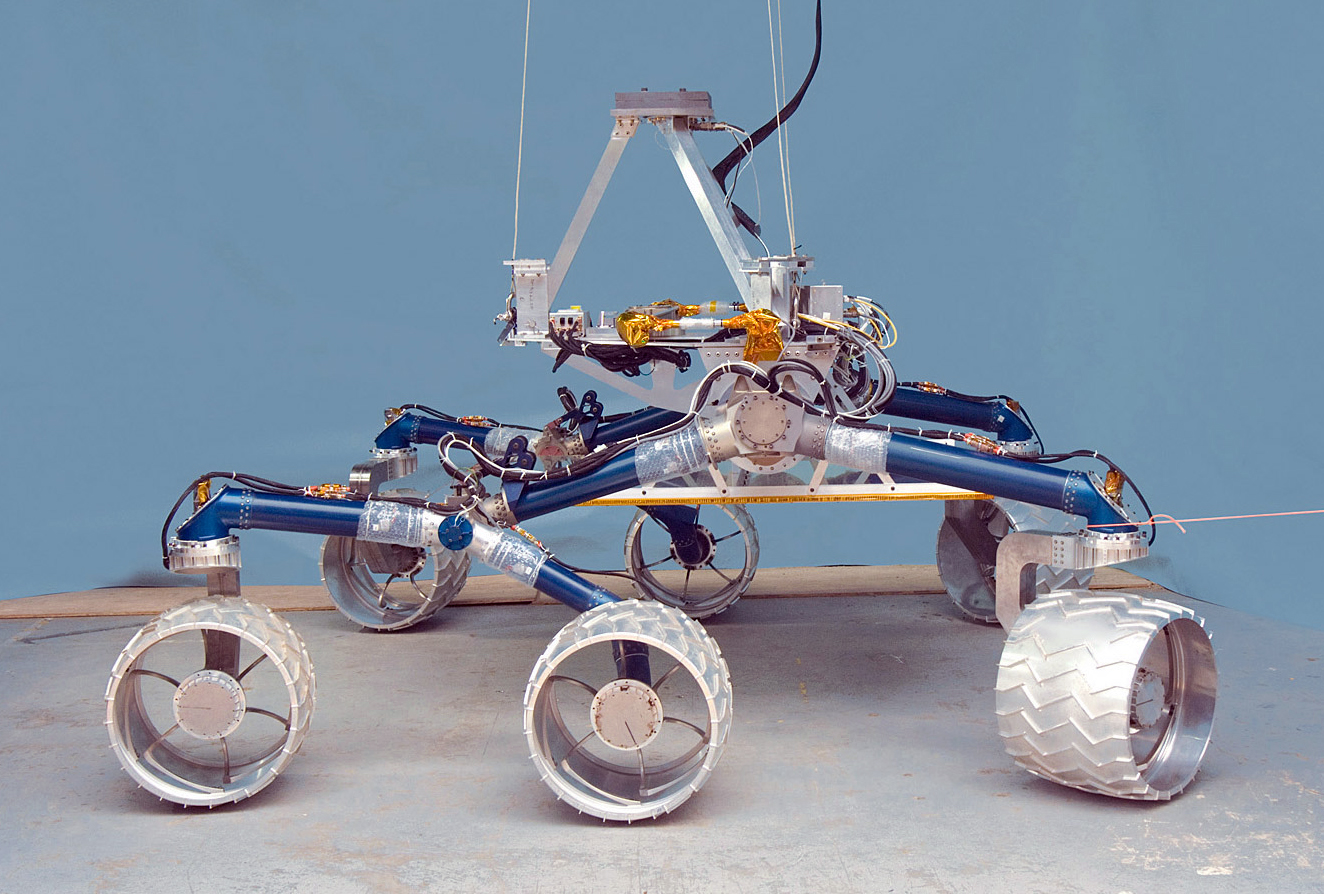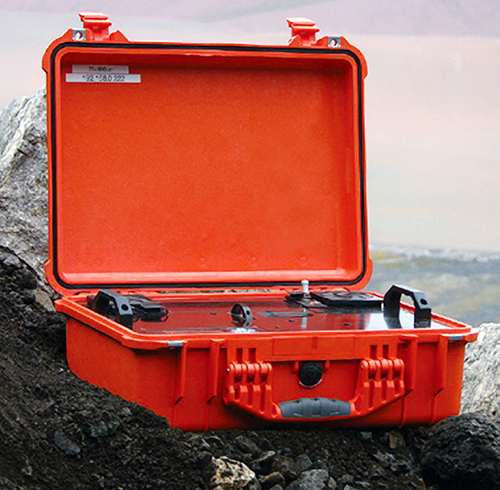
Portable Device Analyzes Rocks and Minerals
Originating Technology/NASA Contribution
Building on the success of the two rover geologists that arrived on Mars in January 2004, NASA’s next rover mission is being planned for travel to the Red Planet before the end of the decade. Twice as long and three times as heavy as the Mars Exploration Rovers, Spirit and Opportunity, the Mars Science Laboratory (MSL) will collect Martian soil and rock samples and analyze them for organic compounds and environmental conditions that could have supported microbial life.
MSL will be the first planetary mission to use precision landing techniques, steering itself toward the Martian surface similar to the way the space shuttle controls its entry through the Earth’s upper atmosphere. In this way, the spacecraft will fly to a desired location above the surface of Mars before deploying its parachute for the final landing. As currently envisioned, in the final minutes before touchdown, the spacecraft will activate its parachute and retrorockets before lowering the rover package to the surface on a tether (similar to the way a sky crane helicopter moves a large object). This landing method will enable the rover to land in an area 20 to 40 kilometers (12 to 24 miles) long, about the size of a small crater or wide canyon and three to five times smaller than previous landing zones on Mars. NASA plans to select a landing site on the basis of highly detailed images sent to Earth by the Mars Reconnaissance Orbiter, in addition to data from earlier missions.
Like the twin rovers now on the surface of Mars, the MSL will have six wheels, and cameras mounted on a mast. Unlike the twin rovers, it will carry a laser for vaporizing a thin layer from the surface of a rock to analyze the elemental composition of the underlying materials, and will be able to collect rock and soil samples and distribute them to onboard test chambers for chemical analysis. Its design includes a suite of scientific instruments for identifying organic compounds such as proteins, amino acids, and other acids and bases that attach themselves to carbon backbones and are essential to life as we know it. MSL will also identify features such as atmospheric gasses that may be associated with biological activity.
Using these tools, the MSL will examine Martian rocks and soils in greater detail than ever before to determine the geologic processes that formed them; study the Martian atmosphere; and determine the distribution and circulation of water and carbon dioxide, whether frozen, liquid, or gaseous.
The rover will carry a radioisotope power system that generates electricity from the heat of plutonium’s radioactive decay. This power source gives the mission an operating lifespan on Mars’ surface of a full Martian year (687 Earth days) or more while also providing significantly greater mobility and operational flexibility, enhanced science payload capability, and exploration of a much larger range of latitudes and altitudes than was possible on previous missions to Mars.
Partnership
inXitu Inc., of Mountain View, California, a leader in portable X-ray diffraction/X-ray fluorescence (XRD/XRF) instrumentation, entered into a Phase II Small Business Innovation Research (SBIR) contract with Ames Research Center. The company specializes in developing technologies for the next generation of scientific instruments for materials analysis. It rapidly evolved throughout the SBIR Phase II research, starting as a sole proprietorship and growing to a 10-employee corporation. Critical findings from the research were applied to the CheMin instrument (an instrument with chemical and mineral identification capabilities included in the analytical laboratory of MSL), enabling robust operation of its sample handling system.
During this SBIR Phase II research, inXitu designed and built an automated sample handling system for planetary XRD instruments that enables quality analysis of coarse-grained materials (XRD analyzes the crystalline arrangements of atoms or molecules in solids). The sample handling method developed by inXitu allows direct analysis of materials obtained from drills or rock crushers, eliminating the need for the extensive sample preparation typically required for XRD analysis. Sample loading and removal have been automated without complex mechanisms and with a minimum of moving parts.
inXitu’s sample handling system could find a wide range of applications in research and industrial laboratories as a means to load powdered samples for analysis or process control. Potential industries include chemical, cement, inks, pharmaceutical, ceramics, and forensics. Additional applications include characterizing materials that cannot be ground to a fine size, such as explosives and research pharmaceuticals.
Product Outcome
inXitu’s Terra product is the first truly portable XRD/XRF system designed specifically for rock and mineral analysis. XRD is the most definitive technique to accurately determine the mineralogical composition of rocks and soils. Phase identification is obtained by comparing the diffraction signature of a sample with a database of XRD mineral patterns. The addition of XRF informs on the nature of the chemical elements in the sample which allows easy screening during the phase identification process and can alleviate rare uncertainties.
Terra is the result of over a decade of research and development for space exploration instrumentation. Using a low-power X-ray source and energy dispersive 2-D charge coupled device (CCD) detector, XRD and XRF data are obtained with no moving parts, providing an unparalleled robustness. The system provides fast identification capabilities thanks to its optimized geometry and high-sensitivity detector. With the company’s patented sample handling system, only minimal sample preparation is required. Single minerals or simple mixtures can be identified after just a few minutes of integration.
Terra is built in a rugged, compact case for easy transport and operates autonomously via an embedded computer. In addition to a basic user interface on the instrument panel, a graphic user interface is available through a Wi-Fi link from any laptop or hand-held computer to control the instrument, preview live data, explore archive files, and download data.
Terra was first designed as a field geology/mineralogy instrument, but it can find a range of other applications where portability and fast analysis using XRD are required (mining, forensics, homeland security, etc.). Several Terra instruments are currently being used by NASA geologists to practice for the operational phase of the Mars Science Laboratory rover XRD instrument.

inXitu’s portable rock and mineral analysis device was tested at the Mars Analog site in Spitsbergen, Norway.

The Mars Science Laboratory rover is larger and can travel farther than Spirit and Opportunity, NASA’s two Mars Exploration Rovers that began exploring the Red Planet in early 2004.













